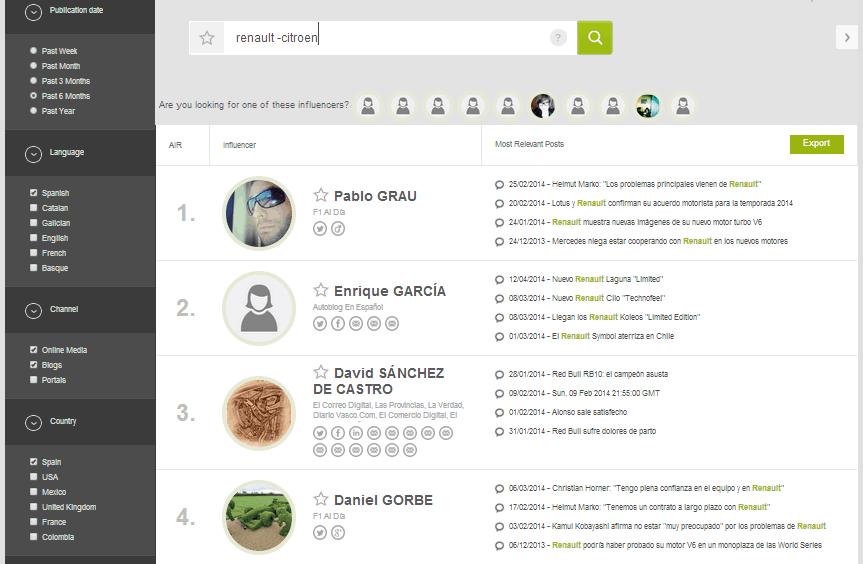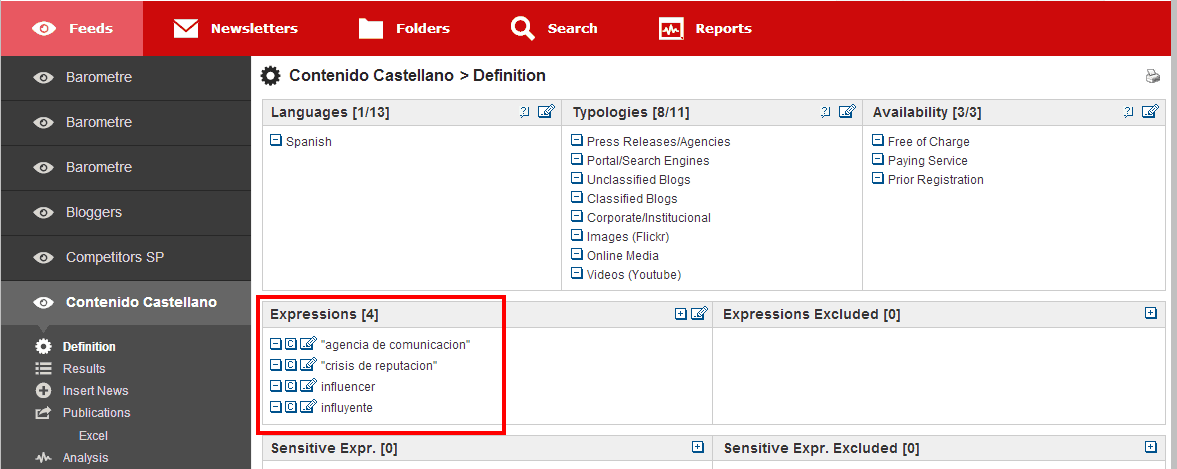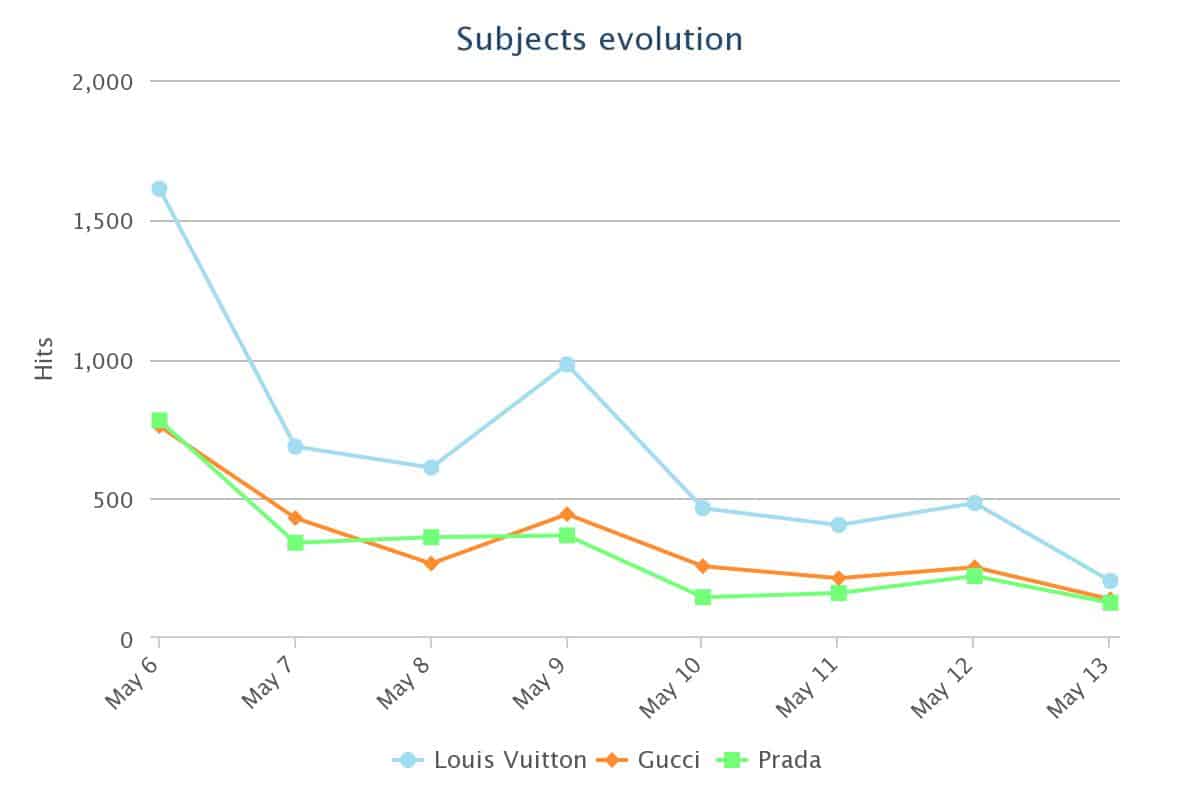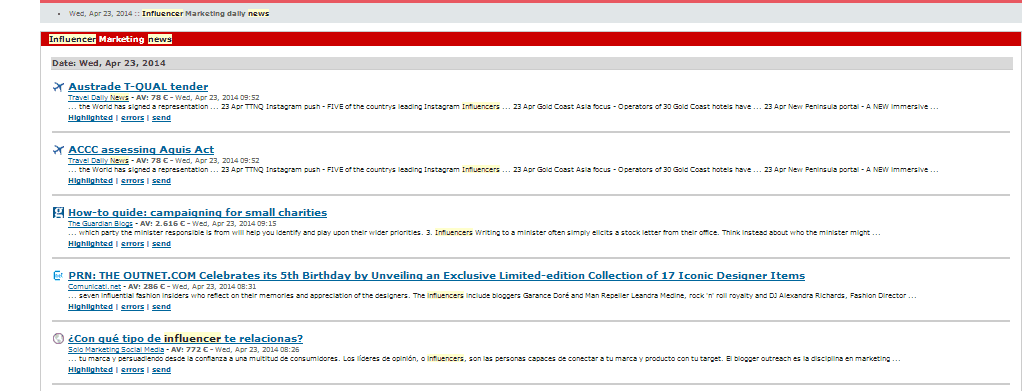Benchmarking otherwise known as a competitors analysis can serve as a guide in defining or changing your communication strategy. This is not to copy or do what other companies do, the goal is to learn from the “best practices” or successful actions – and from failure too – that other companies have launched. When we start a benchmark monitoring plan we should not focus only on direct competitors, but also in other companies of similar sectors from which we can learn.
Making a benchmarking process in the communication area has its advantages; the vast majority of the information we need can be public (media, blogs, social networks, online aggregators, online press releases, etc …). Therefore, the best tool that we have for making a benchmarking process, is an online monitoring of all media, establishing the right searches.
The competitors analysis is not an isolated action but, on the contrary, it is a constant process that the company should attempt to automate for occupy most of their time on analysis rather than in data collection. Under this premise, the monitoring process we recommend is as follows:
In this article you’ll learn…
Defining the competition issues to monitor and online monitoring configuration
Before we begin, we must be clear about the issues we want to analyze from our competitors because otherwise can cause an excess of information that does not lead to any concrete conclusions. Finally, monitoring our competitors should serve to answer specific questions as in the following examples:
Who are the influencers who work with our competitors and what kind of collaborations they carry out?
We already know the potential of Influence Marketing in generating visibility for a brand and enhancing corporate reputation. One of the reasons to launch a benchmarking process is to identify influential bloggers, journalists or social media users in my industry who talk about the competition but do not mention my brand. This information can help us to know which influencers aren’t we identifying and also, what mistakes we make when trying to work with them.

Sample of a bloggers and journalists search who talk about specifically Renault, but not about Citroen in Launchmetrics Influencers
What is the content strategy of my competitors or others in the industry?
By tracking the blog or resources area from other companies, we can identify if they are implementing new content actions and whether these actions are having an impact on media publications and blogs.
What communication strategy are my competitors using? Are they succeeding?
Generally, I can keep track of the brand, the products, the spokespersons, mentions and even monitor on Twitter to follow and save all the my competitors tweets, hashtags they use.
What are my competitors, bloggers and social media users say about the issues that matter to my business?
Benchmarking can be focused to follow other brands and content creators in general (bloggers, journalists and users of social networks) with the aim of identifying conversations in which I can participate, themes to talk about on my content strategy and questions I can answer. My recommendation is to identify the key terms used in the market and establish a monitoring on social networks and media on these terms. Beware of terms that can produce a lot of noise in your monitoring.

Identify the keywords your audience is talking about to create a monitoring system like the one you see above.
Am I getting the results that I want from my benchmark monitoring plan?
Benchmarking is useful for communication and marketing teams to highlight the value of their activity and results. If we managed to get 20 appearances in different blogs, is this a good result? The answer is: “It depends.” It depends on the monetary and human labor as well as the goals set. If we want to have a real vision on the success of our actions, comparing these results with other competitors, can help us to put it into context and also, know how our participation in comparison to the rest of the market is.

Chart comparing different media impacts of different fashion brands
Results analysis and action plan
The monitoring of your competitors must be followed by an analysis of the results based on the predetermined objectives, and also of an action plan in our communication strategy. The following points explain in detail some of the areas to work on:
- Influencers working with your competitors: identify the type of collaboration they have with other brands. Find similar influencers and interact with them. Remember that before contacting with influencers of your industry, you should make a previous tracking of their online activity to customize your contact.
- Include in your editorial calendar the topics you identify as relevant to your sector. You can combine the monitoring process of media and blogs with the use of tools like Google Trends, to identify the evolution of the interest of users for specific terms and so answer to the users more quickly.
- If you have tried to reach a journalist who is working with your competitors, find new ways to reach him, not only through press releases: breakfast, an invitation to your office or exclusive events, product testing, etc.
- Use data from the impacts to compare your results on the reputation reports you make.
- The news you find on competitors can help you to identify different movements of the competitors and know how to act on them.
And many more actions depending on the initial goals you’ve set. Above all, do not assume that an action taken by a competitor it is an action to follow. Analyze the impact obtained of these actions and study if it is appropriate or not for your business to start with it.
Share your monitoring results with the team
The benchmarking process should give as a result an analysis of the competitors. It allow us to take concrete decisions and an action plan with defined dates. But it is also important information for all members of the company, as sharing with them the results may serve to let them know our status compared to other companies of the sector and also know the different market movements.
The format in which these results are shared is key to awaken the interest of the rest of the team. We must try to synthesize the information and provide only the content that is relevant to them. For example, in our team, we make a daily monitoring of articles written about Influencer Marketing and we daily receive news on this subject. This helps us not only to identify issues that may be of interest to our audience, but also know what competitors are doing in this area.

Send your monitoring results in attractive formats and with key content to your team
Another example of different formats are online magazines (webzines), which may include not only publications in online media, but also tweets, videos and even offline publications. The cool thing about the webzines is that they are responsive and can be read on any device!
Interested in knowing more about creating benchmark monitoring plans? Check out this post:
